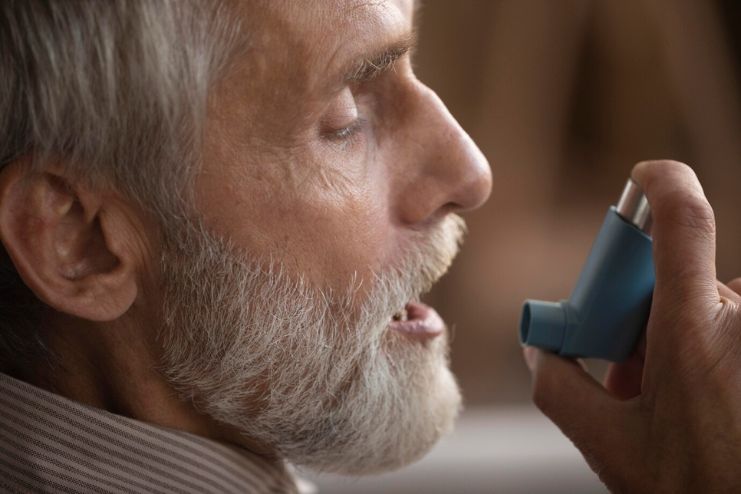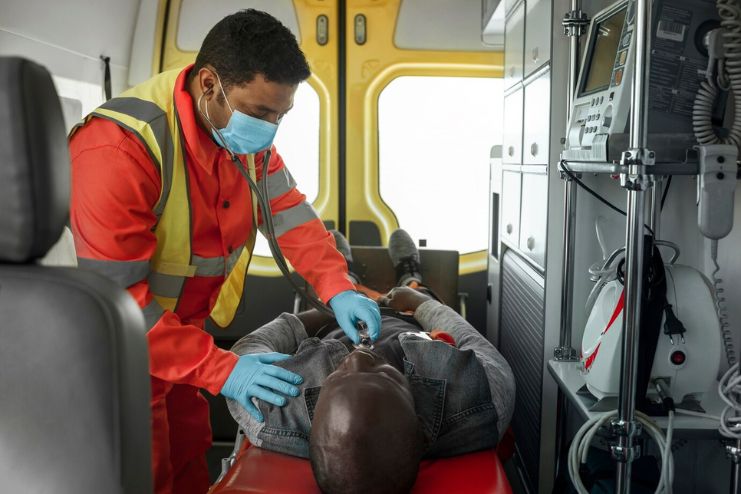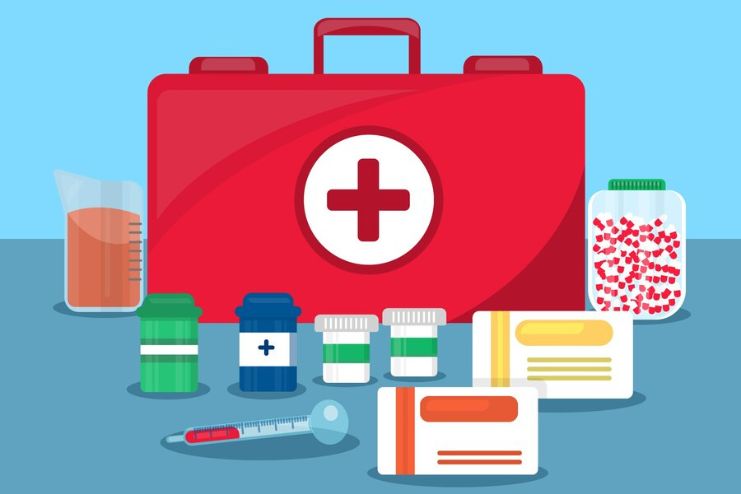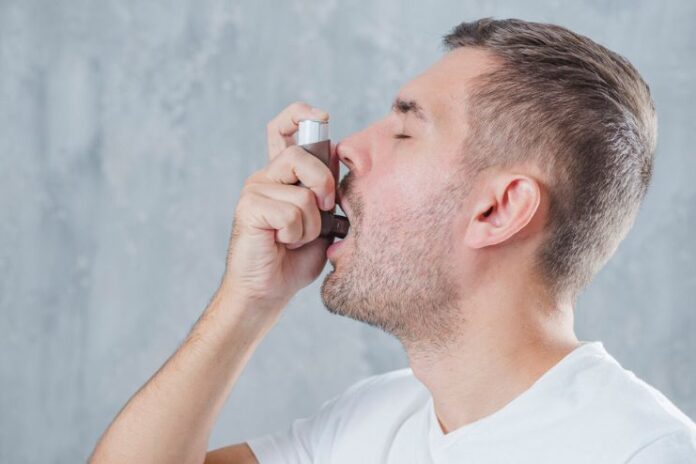Every year, thousands of emergency room visits—and even deaths—occur due to asthma attacks that escalate too quickly, often because of a lack of preparation. When an asthma attack happens, every second counts. Recognizing the early signs and knowing how to respond can mean the difference between a full recovery and an urgent medical emergency.
It is crucial to understand symptoms indicating an upcoming asthma attack, how to react swiftly when it happens, and how to prepare a personal asthma emergency plan with loved ones for safety.
This article covers everything from what to do during an asthma attack to how to design the ultimate asthma emergency kit—all of which are meant to keep you calm, quick to act, and fully prepared. Whether you’re managing asthma yourself or helping someone else, this survival guide will help you feel more confident and in control when it matters most.
What Happens During an Asthma Attack?

When asthma attacks occur, the lungs’ airways become swollen and constricted, making breathing extremely difficult for the patient. This bronchoconstriction leads to inflammation of the lungs, causing muscle tightening, and the airways produce excessively thick mucus, further obstructing airflow.
The end result is wheezing, coughing, chest tightness, and shortness of breath—symptoms that can be mild or can progress to being life-threatening.
Asthma attacks are generally classified into three levels of severity:
- Mild: Some wheezing, coughing, or a slight feeling of shortness of breath may occur. In such episodes, rescue inhalers work well and usually do not interfere with daily activities.
- Moderate: Breathing difficulty increases, symptoms persist despite inhaler use, and physical activity may be impaired.
- Severe: Breathing becomes labored and rapid, speaking is restricted to a few words at a time, and the person may appear pale or cyanotic around the lips or fingernails. This is a medical emergency that requires immediate help.
Understanding what is happening in the body during an asthma attack highlights the importance of swift action and proper preparation. If you’d like to explore asthma’s causes, triggers, and types, please check out our “All About Asthma – Key Symptoms, Causes, and Effective Treatments”.
Also, Read: All About Asthma – Key Symptoms, Causes, and Effective Treatments
Early Warning Signs of an Asthma Attack

Asthma attacks hardly come unannounced. More often than not, your body sends subtle signals that something isn’t quite right; your job is to be alert so these signs do not escalate into something more serious.
Some common early warning signs include:
- Coughing That Won’t Stop: Coughing doesn’t stop, particularly at night or early morning. To a healthy person, this may seem of no consequence, but for someone with asthma, it is often the first way their body signals a change.
- Shortness of Breath, Wheezing, or Chest Tightness: Rare instances when breathing becomes harder than usual, and the chest feels a little tighter or makes a squeaky sound upon exhalation, should be considered.
- A Drop in Your Peak Flow Reading: If you have a peak flow meter, a noticeable decrease means a reduction in lung function.
Tip: Do not wait for these symptoms to worsen. Quick action can prevent an asthma attack from escalating.
What to Do During an Asthma Attack

Step-wise Action Plan
- Stay Calm and Sit Up Straight
Panic can increase symptoms. Sitting upright helps open your airways — do not lie down.
- Use Your Reliever Inhaler (e.g., Albuterol or Salbutamol)
- Take 1–2 puffs immediately.
- Use a spacer if you have one, as it helps deliver the medication more effectively.
- Wait 60 seconds between puffs, up to a maximum of 4 puffs if needed.
- You can repeat this strategy after 10–15 minutes if symptoms persist.
- Reassess Symptoms Within 10–15 Minutes
- If breathing has improved, continue monitoring.
- If there is little or no change, seek immediate medical attention as it may be an emergency.
Specific Considerations
- Children: Caregivers should use a child-appropriate spacer to administer the inhaler. Watch for signs such as wheezing, coughing, or difficulty speaking.
- Elderly: Elderly individuals may require supervision due to physical or cognitive impairments. Medications should be clearly labeled and stored within reach.
- If Someone Cannot Self-Medicate: A trained caregiver or relative should assist immediately. Contact emergency services without delay.
Helpful Tip: Use your Asthma action plan if you have one. If not, visit the link provided to download our free template or read the article on how to create one.
Keep in Mind: Staying calm is key. Practice deep and slow breathing to reduce panic and ensure better airflow. Preparing in advance builds confidence when it matters most.
When to Call Emergency Services

Sometimes, despite all the effort you put in, an asthma attack can take a turn for the worse, and that’s when immediate action becomes crucial. Recognizing the signs of a severe asthma attack can save a life.
Warning Signs of a Severe Attack:
- Difficulty speaking in complete sentences
- Blue or gray color to the lips or fingernails
- No improvement after using a reliever inhaler
- Very rapid breathing, confusion, or extreme tiredness
- Visible effort to breathe—watch for rising shoulders or engagement of neck muscles
Do not hesitate if any of these signs appear—call emergency services immediately.
When to Call 911:
Let the operator know clearly:
“Severe asthma attack. The patient has used their reliever inhaler, but symptoms aren’t improving, and they’re struggling to breathe.”
Stay calm, be direct, and be ready to answer any questions they may ask. Clear information speeds up the response.
Things to Do While Waiting for Help:
- Keep using the reliever inhaler as prescribed (usually every few minutes)
- Help the person stay calm—panic makes breathing worse
- Do not lie down: keep them sitting upright and monitor their breathing and alertness
Time is everything during a severe asthma attack—quick thinking and composed action can make all the difference.
Your Asthma Emergency Kit: What to Pack

The right tools can make a difference when an asthma attack strikes. That is why an emergency box should be set up as a well-stocked asthma emergency kit—whether at home, in school, at work, or even while traveling.
Here’s What Your Kit Should Contain:
- Reliever inhaler – Check that it is not expired and that you know how to use it properly.
- Spacer device – For effective delivery of aerosolized medication, especially in an emergency.
- Peak flow meter – Useful for assessing breathing status and determining subtle drifts.
- A copy of your asthma action plan – Written steps one must take during an attack.
- Emergency contact card – Includes family contact numbers and your doctor’s information.
- Antihistamines – May help reduce the triggers of allergic asthma.
- Portable nebulizer – Include this if prescribed, especially for children.
- Compatible spare battery or charger – Very important if using a battery-operated nebulizer.
- Notebook or log – To note symptoms, peak flow measurements, and medication usage.
Storage Tip:
Store your asthma kit in a small, lightweight, portable carry pouch or handbag. Keep a backup at school, work, or any other place you frequent. Being prepared keeps you one step ahead.
Ongoing Asthma Preparedness

Preparation is more than just acquiring an emergency kit. It is, in fact, about creating habits that can help you stay ahead of asthma, day in and day out.
- Get into Proactive Mode: Awareness is the first step in preparedness. Know yourself—your body, triggers, and routine. Most importantly, learn what to do before an asthma attack occurs.
- Observe Symptoms: Pay close attention to your breathing, cough, or peak flow readings, and notice any changes. Track patterns and adapt your environment or medications when needed.
- Ensure Medicines are within Reach and Updated: Never wait until you’re out. Refills should be obtained well before you run low. Regularly check the expiration dates of inhalers and medications.
- Review Your Asthma Action Plan: Make it a point to sit down with your doctor to establish or review your action plan. Life continues to change—and so can your asthma. Everyone around you, including family, caregivers, and teachers, should have copies and know how to respond in an emergency.
- Make it a Habit to Educate Them: Help acclimate those around you to your condition. Teach them to recognize the signs of an asthma issue and how to use their inhaler or other treatments as needed.
- Be Calm: Be mentally prepared. Practice staying calm so that when the moment presents itself, you can take action, not panic.
Conclusion: You’ve Got This!
Although asthma attacks may seem difficult to manage, it is possible if one is well-prepared for them.
Capable tools and habits will make everyone aware and ready to react professionally, regardless of location.
Wanna Know More?
To acquire in-depth knowledge about different asthma triggers, breathing techniques, or vital management tips, continue reading our other articles.
Also, Read: “Breathe Better: 8 Essential Oils to Soothe Asthma Symptoms” and “Can Your Diet Help Control Asthma? Discover the Foods That Make a Difference”
Act Now:
- Download the emergency asthma checklist.
- Click here to subscribe and receive future tips and updates.
References
- https://www.nhlbi.nih.gov/health/asthma/treatment-action-plan
- https://www.nhlbi.nih.gov/resources/asthma-action-plan-2020
- https://www.lung.org/lung-health-diseases/lung-disease-lookup/asthma/managing-asthma/create-an-asthma-action-plan
- https://www.cdc.gov/asthma/emergency/index.html
- https://www.lung.org/lung-health-diseases/lung-disease-lookup/asthma/treatment/medication
- https://www.verywellhealth.com/bronchodilator-or-steroid-inhaler-3970974
In this Article



















